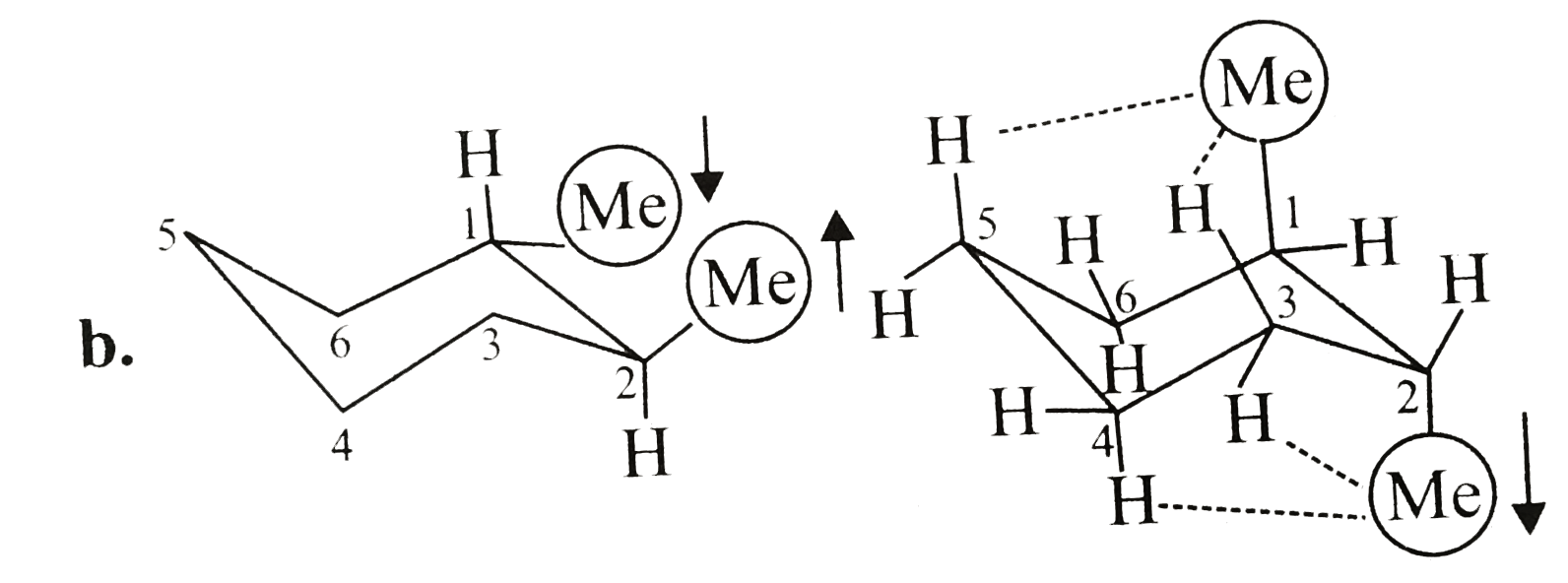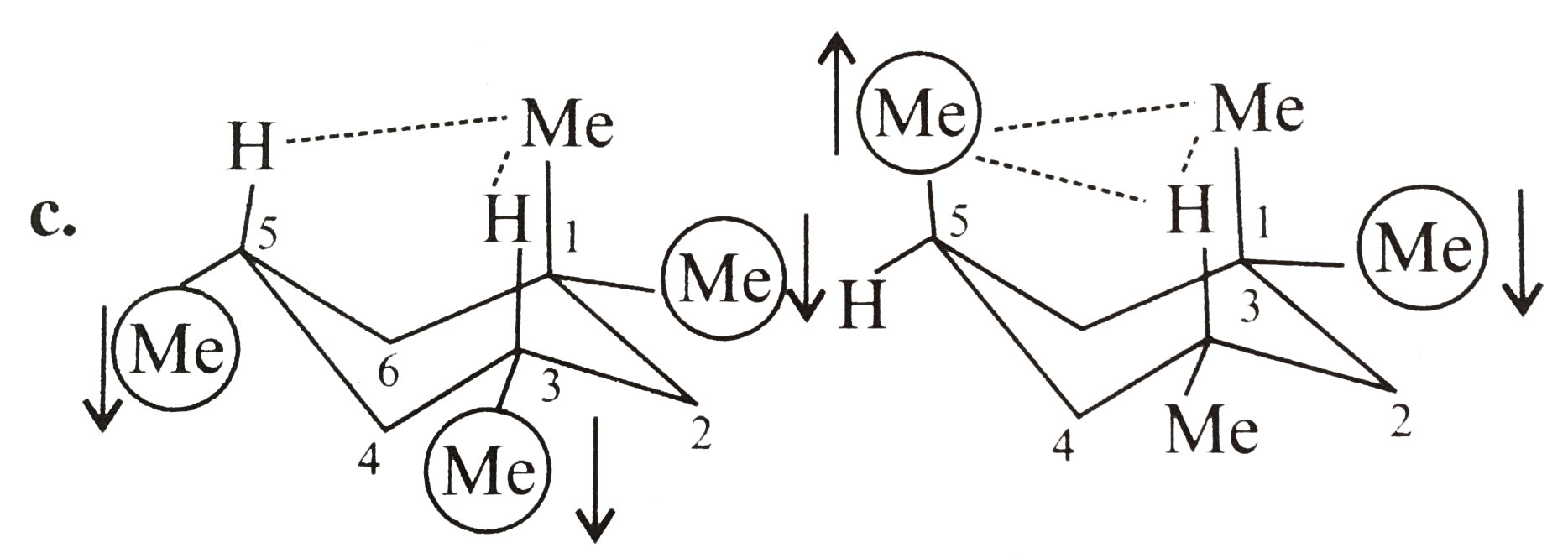Each Me/H, 1,3-diaxial interaction imparts 3.75 kJ mol−1 and each Me/Me, 1,3-diaxial interation imparts 15 kJ mol−1 of instability to a compound. Find the energy differences between the more stable conformers of
a. Cis - and trans-1,3-dimethyl cyclohexane.
b. (e,e) and (a,a) trans-1,2-dimethyl cyclohexane.
c. cis- and trans-1,1,3,5-tetramethyl cyclohexane.
Video Solution
Text Solution
a. 

Therefore, cis is more stable than trans isomer by 7.5kJmol−1.
b. 
Therefore, trans I (1e, 2e) is more stable than trans II (1a, 2a) by 15 kJ mol−1.
c. 
Therefore, cis from (I) is more stable than trans from (II) by 22.5−7.5=15kJmol−1 .
|
Topper's Solved these Questions
- ALKANES AND CYCLOALKANESBOOK - CENGAGE CHEMISTRYCHAPTER - ALKANES AND CYCLOALKANESEXERCISE - SOLVED EXAMPLES
19 Videos
- ALKANES AND CYCLOALKANESBOOK - CENGAGE CHEMISTRYCHAPTER - ALKANES AND CYCLOALKANESEXERCISE - EXERCISES
24 Videos
- ALKENES AND ALKADIENESBOOK - CENGAGE CHEMISTRYCHAPTER - ALKENES AND ALKADIENESEXERCISE - Single correct Answer
14 Videos
Similar Questions
Knowledge Check
The stable conformer (s) of trans−1−4− dimethyl] cyclohexane is/are:
A1− axial -4− equatorial formB1− axial −4− axial formC1− equatorial −4− axial fromD1− equatorial−4− equatorial fromThe most stable from trans-1,2-dimethyl cyclohexane is:
A(a) (1e, 2e)B(b) (1a, 2a)C(c) (1e, 2a)D(d) (1a, 2e)Which would be the most stable conformation of trans-1-ethyl-3-methylcyclohexane ?
Aequatorial (methyl) -equatorial (ethyl)Baxial (methyl) -equatorial (ethyl)Caxial (methyl)-axial (ethyl)Daxial (ethyl)-equatorial (methyl)
Which is more more stable, cis - or trans- 1,3-di-(methylcarboxylate) cyclobutane?
View SolutionThe IUPAC name of given compound is
(1) 1-Ethyl-3-methyl cyclohexane
(2) 1-Methyl-3-ethyl cyclohexane
(3) 3-Methyl-I-ethyl cyclohexane
(4) 3-Ethyl-I-methyl cyclohexane
View SolutionWhich statements is/are correct about the conformer of cis and trans 1,1,3,5-tertramethyl cyclohexane ?
View SolutionThe stable conformer (s) of cis-cyclohexane 1−3− diol is/are:
View SolutionCompare the stabilities of the following two compounds :
A : cis-1-Ethy-3-methycyclohexane
B : trans-1-Ethyl-3-methycyclohexane
View Solution
